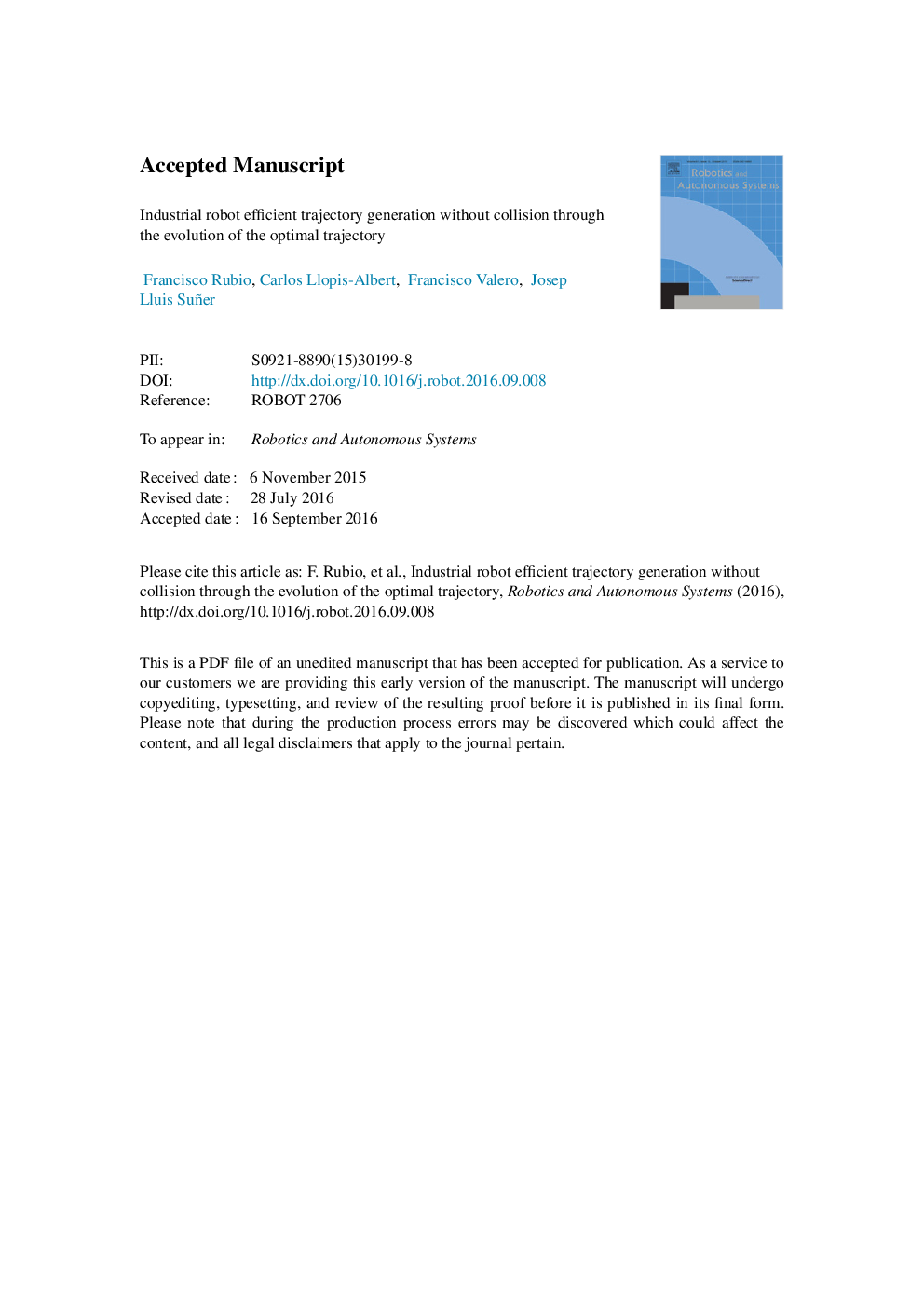| Article ID | Journal | Published Year | Pages | File Type |
|---|---|---|---|---|
| 4948913 | Robotics and Autonomous Systems | 2016 | 15 Pages |
Abstract
An efficient algorithm is presented to obtain trajectories for industrial robots working in industrial environments. The procedure starts with the obtaining of an optimal time trajectory neglecting the presence of obstacles. When obstacles are considered, the initial trajectory (obtained by neglecting obstacles) will not be feasible and will have to evolve so that it can become a solution. In this paper, the way that it evolves until a new feasible collision-free trajectory is obtained considering the possible obstacles is described. This is a direct algorithm that works in a discrete space of trajectories, approaching the global solution as the discretization is refined. The solutions obtained are efficient trajectories near to the minimum time one and they meet the physical limitations of the robot (the maximum values of torque, power and jerk are considered for each actuator), avoid collisions, and take into account the constraint of energy consumed. Examples already published and new examples in real industrial environments have been solved to verify the working of the algorithm.
Related Topics
Physical Sciences and Engineering
Computer Science
Artificial Intelligence
Authors
Francisco Rubio, Carlos Llopis-Albert, Francisco Valero, Josep Lluis Suñer,
